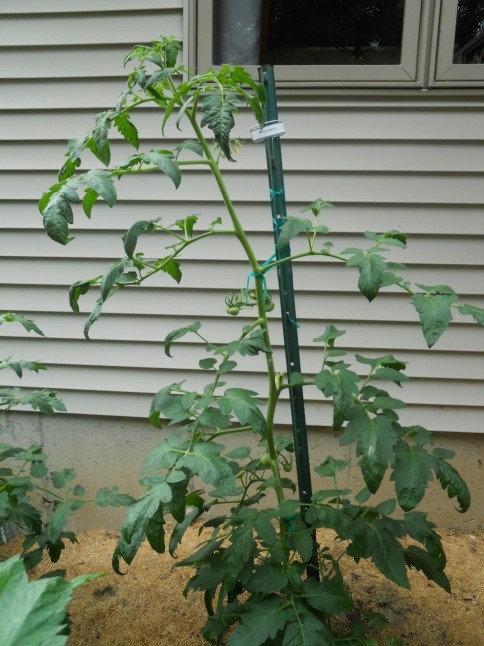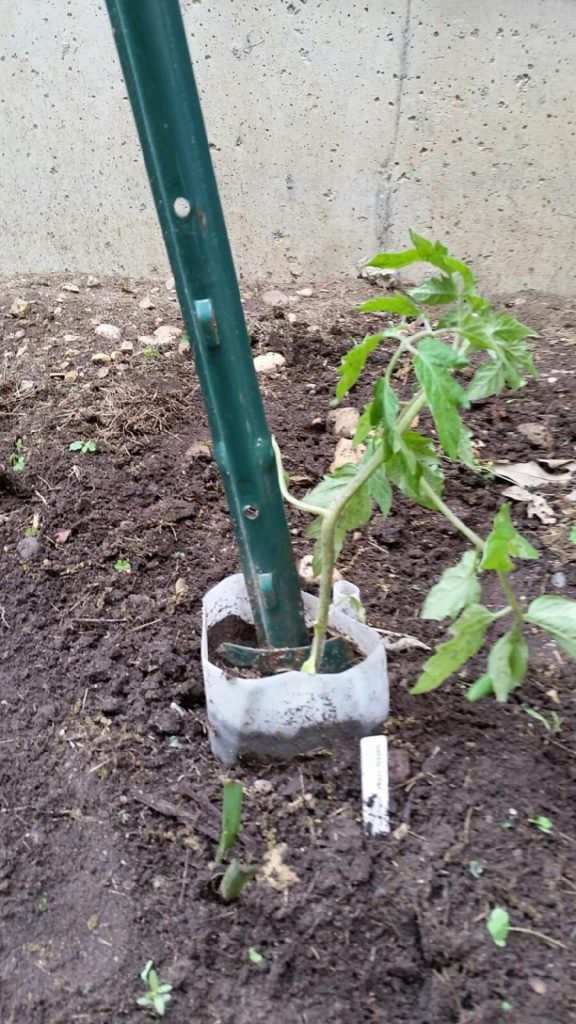
Staking and Suckering Tomato Plants
Post by Janice Peterson
At the recent Spring Plant Sale at Rotary Botanical Gardens, I was discussing tomatoes with a couple of women. One told me she’d like to try several indeterminant varieties but didn’t have enough space. She complained that when she plants and cages just one tomato plant it takes over her entire small garden area, creating a veritable jungle. I suggested staking and suckering the plants, a method I routinely do. They had never heard of this technique and were amazed to hear it could keep their tomatoes plants vertical and “under control”.
Here is how I stake and sucker an indeterminant tomato plant. I start with a 4- or 6-foot fence post and plant my tomato in front of it. As the tomato grows I loosely tie the main stem to the post with heavy-duty garden tape. Now I’m ready to let the plant grow and prune out the suckers.

A newly planted tomato. This bed is on a slope, so a bottomless plastic milk jug is used to facilitate watering and prevent run-off.

A marker with the variety name at the top of the fence post can be read all season long.
Suckers are the side branches that grow at the crotch, or node, of each leaf stem. As the new shoot emerges it can be easily pinched off while still young (under 4” long). I remove suckers weekly. I also remove the foliage from about the bottom foot of the plant.

Tomatoes starting to form on a suckered plant.
Suckering results in one main stem that bears fewer but larger fruit, with earlier production. The plants have increased air flow which is important for reducing disease. The plants take up less horizontal space, and the fruits are easier to harvest. However, as the plant has less dense foliage the fruit might be more at risk of sunscald, although I’ve never has a problem with that here in our northern climate.
About a month before the first frost date (which is typically about October 4-10 in Rock County) the plants can be “topped”, that is, the growing tip of the main stems are removed. This tells the plant to stop producing flowers and helps the fruit already on the plant to mature quicker. I must admit I usually forget this step and then I am left with many small green tomatoes!
This is just one of many techniques for growing tomato plants. Last year I knew I wouldn’t have much time to garden so I set my tomatoes in cages and let them do their thing. I still was able to harvest many tomatoes, although it required a climb through the jungle to do so!
